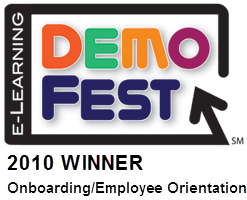SHIFT took top honours at DemoFest in the Onboarding / Employee Orientation category. Rick Beaudry, CEO of Mindmuze, demonstrated the winning technology again during the "DemoFest Highlights Webinar"
See SHIFT and the rest of the DemoFest 2010 Winners in The DemoFest Highlights recorded webinar below.



